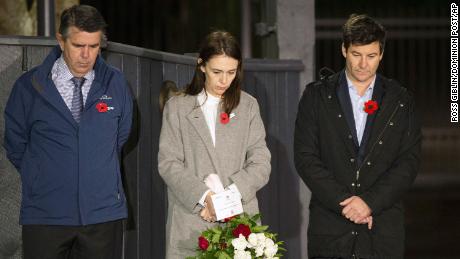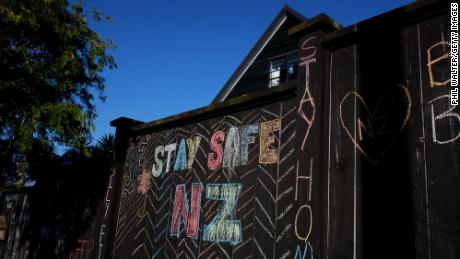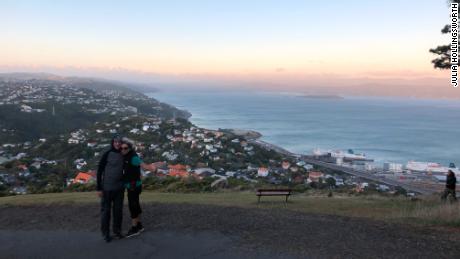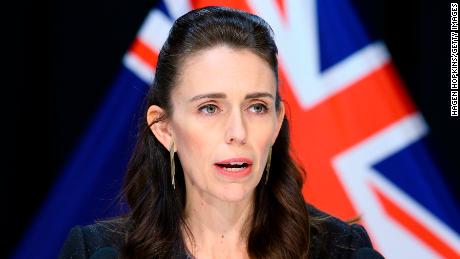Here’s how New Zealand ‘eliminated’ the virus
But the country isn’t celebrating yet.
Over the past few days, newly diagnosed infections have been in the single digits. And on Monday, New Zealand reported just one new case.
“That does give us confidence that we’ve achieved our goal of elimination, which never meant zero but it does mean we know where our cases are coming from,” Ashley Bloomfield, New Zealand’s Director General of Health, said on Monday, adding that there was only one case since April 1 where authorities were still investigating the source of infection.
On Tuesday, the country eased into a less restrictive lockdown, with 400,000 more New Zealanders heading back to work and 75% of the country’s economy operating, according to Ardern. The new level three restrictions also mean that New Zealanders will be able to hold small funerals and buy takeaways.
“We are not out of the woods,” she said at a press conference Tuesday. “(Level three) is a recovery room of sorts to assess if the incredible work that New Zealanders have done … has worked.”
When it comes to what worked, New Zealand had some advantages in tackling the virus. It had the benefit of time — New Zealand confirmed its first case of coronavirus on February 28, well over a month after the United States confirmed its first case.
It’s a relatively remote island nation, and relatively few flights transit through New Zealand. It’s also centrally governed, meaning it doesn’t have states like the US or its neighbor Australia.
But the real key to New Zealand’s success appears to be an approach that could be applied anywhere — moving swiftly, testing widely, and relying heavily on good science.
Moving swiftly
Like many countries, New Zealand had models that showed that a potential coronavirus outbreak could be devastating if no action was taken. Unlike some other countries, New Zealand responded relatively fast.
When Ardern announced on March 14 that anyone entering the country would need to self isolate for two weeks, it was among the toughest border restrictions in the world. At the time, the country had six cases.
When, on March 19, Ardern banned foreigners from entering the country, there were 28 confirmed cases.
And on March 23, when Ardern announced that the country was going into lockdown, there were 102 confirmed cases — and no deaths.
“Decisive action, going hard and going early, helped to stamp out the worst of virus,” Ardern in a statement Tuesday.
“Here in New Zealand, we don’t have a lot of intensive care beds compared to some other countries. That’s why (Ardern) acted really fast,” Auckland University microbiologist Siouxsie Wiles said earlier this month.
While New Zealand took prompt action, it is being slow to roll back prevention measures. Even as the country’s cases appeared to trend downward, Ardern opted to extend the most restrictive, level four lockdown measures by five days.
Testing widely
New Zealand has ramped up its testing, to the point that it can now carry out up to 8,000 tests per day, Ardern said Tuesday.
But the real sign that New Zealand’s testing is working is its test positivity rate — the proportion of tests coming back positive.


New Zealand Prime Minister Jacinda Ardern stands at dawn on the driveway of Premier House with her father Ross Ardern, left, and partner Clarke Gayford to commemorate Anzac Day in Wellington, New Zealand, on April 25, 2020.
New Zealand’s test positivity rate is around 1%, suggesting that there isn’t widespread community transmission that’s slipping under the radar.
On Monday, Ardern noted that in other countries around the world, each person infected with coronavirus infects around 2.5 people. Under New Zealand’s lockdown, that has dropped to 0.4 — less than half a person infected.
Relying on good science
The real lesson from New Zealand has been the combination of good science and leadership, Professor Michael Baker, from Otago University’s Public Health Department, said earlier this month.
Throughout the lockdown period, Ardern has appeared alongside Bloomfield at regular press conferences, with Ardern often passing questions from the media to him.
“In New Zealand, it has been a wonderful link between good science, and brilliant leadership, and the two together are I think are really highly effective,” said Baker. “I’ve been really disappointed that countries who have far more, absolutely the top science resources in the world, that is the US and UK, many countries in Europe, have not fared better than countries like New Zealand which has limited resources.”
The future
Although New Zealand is currently being seen as a success story of the coronavirus crisis, it also shows that gains in the fight against Covid-19 doesn’t mean a return to life as normal.
Despite New Zealand’s early success, the country is still effectively in lockdown, with most people still being told to stay home and stick to their “bubbles” — the name for the people they are isolating with.
“(Level three) is not and cannot be returned to pre-Covid-19 life,” Ardern said Monday. “That day will come, but it is not here yet.”


A house fence chalked up with messages relating to the Covid-19 lockdown on April 3, 2020 in Auckland, New Zealand.
Ardern pointed out that the battle against Covid-19 would continue until there is a vaccine. And — like other countries — New Zealand still has an economic fight to contend with.
“We will do all we can to ensure we fight the economic impacts of the virus in the same way we did the health threat,” Ardern said on Tuesday. “With unity, with fast support, by looking after each other.”
![]()





